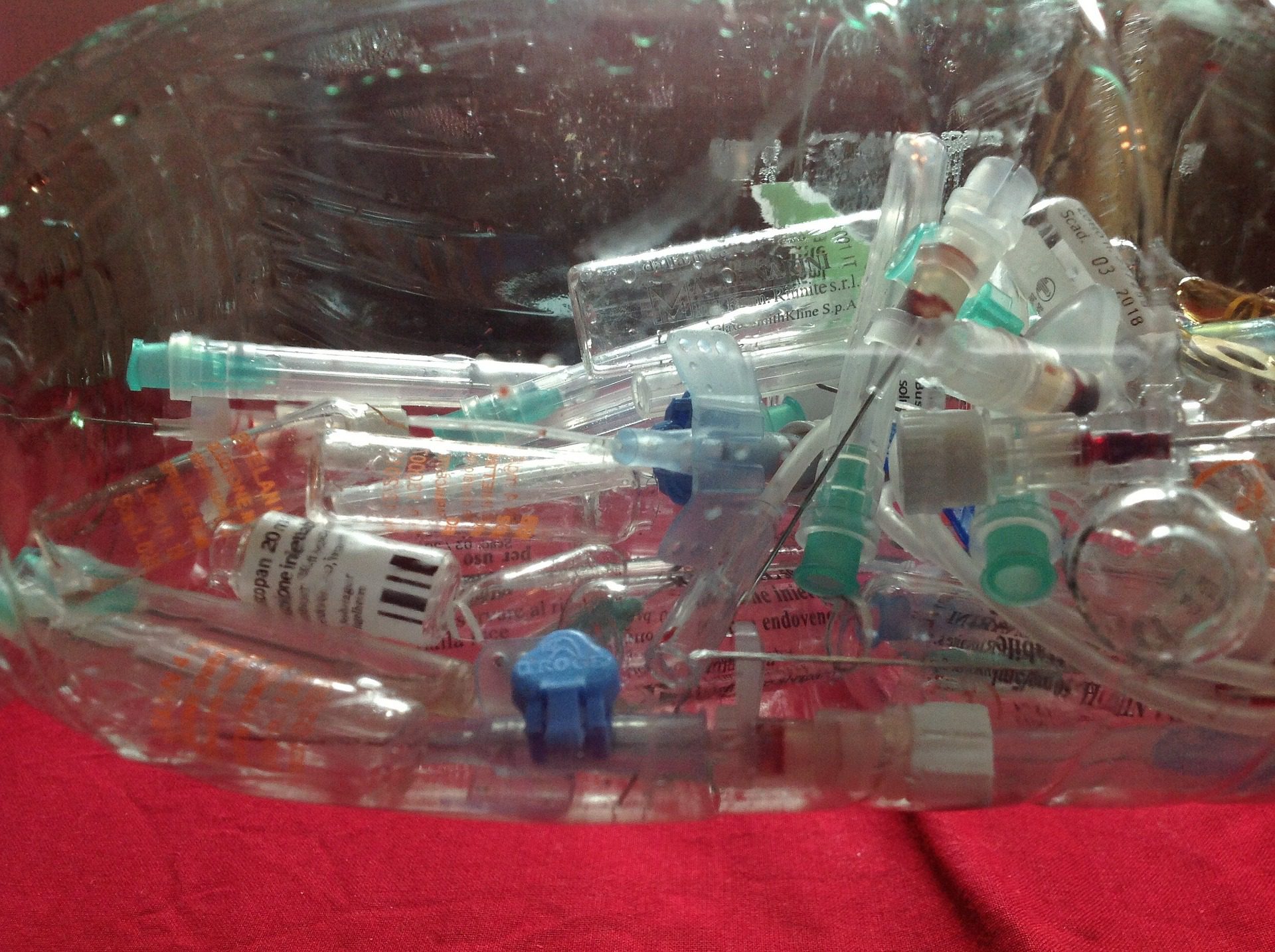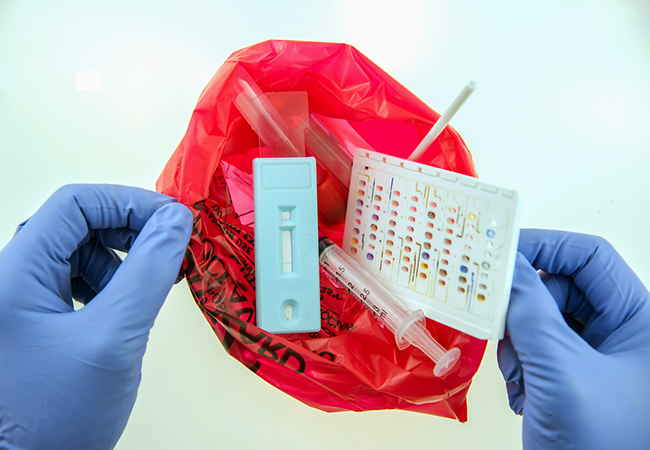Safeguarding Wellness: Expert Medical Waste Removal Services for a Clean Atmosphere
Wiki Article
The Relevance of Proper Medical Garbage Disposal: A Guide for Medical Care Facilities
Appropriate medical waste disposal is a critical aspect of medical care center management, guaranteeing the safety and wellness of people, staff, and the atmosphere. From recognizing the various groups of clinical waste to abiding with governing needs, medical care centers have to adopt effective waste segregation techniques and pick ideal disposal approaches.Recognizing Clinical Waste Categories
Comprehending medical waste categories is critical for proper disposal in health care facilities. Medical waste is a broad term that includes various sorts of waste created in medical care settings, such as hospitals, clinics, and laboratories. Classifying medical waste helps make certain that it is managed, stored, and disposed of securely and based on appropriate laws.There are a number of groups of clinical waste that healthcare centers require to be knowledgeable about. These categories consist of infectious waste, sharps waste, pharmaceutical waste, chemical waste, and radioactive waste (medical waste disposal services with WasteX). Each category has particular features and calls for various disposal methods to reduce the danger of damage to medical care employees, people, and the environment
Infectious waste, for example, refers to squander polluted with possibly contagious materials, such as blood, body liquids, and cells. Sharps waste consists of needles, syringes, and various other sharp things that can create injury or send infections. Drug waste is composed of ended or unused medicines, while chemical waste consists of dangerous chemicals utilized in clinical treatments. Last but not least, contaminated waste consists of products infected with contaminated compounds, such as nuclear medicine products.
Conformity With Regulatory Requirements
Health care centers have to guarantee conformity with governing requirements for appropriate medical waste disposal. Regulatory bodies, such as the Epa (EPA) and the Occupational Safety and Health Management (OSHA), have established standards and guidelines to guard public health and the environment. These policies describe the proper handling, storage space, transportation, and disposal of clinical waste.Compliance with governing requirements is essential for health care centers to avoid lawful penalties, reputational damages, and possible harm to human health and the setting. Failure to adhere to these regulations can lead to penalties, suits, and also the suspension or cancellation of running licenses.
To guarantee conformity, healthcare facilities need to establish detailed waste monitoring programs that include personnel training, correct waste segregation, and using proper containers and labels. Normal audits and evaluations must also be performed to identify any type of non-compliance concerns and resolve them promptly.
It is necessary for medical care facilities to keep up to day with adjustments in policies and update their waste administration methods as necessary. This can be achieved by actively keeping track of updates from regulative bodies and joining training programs and workshops.
Executing Efficient Waste Partition Practices
To make sure appropriate clinical garbage disposal, health care facilities need to carry out efficient waste partition methods. Waste segregation is a vital action in the general waste administration procedure, as it assists reduce the risk of infection, avoids cross-contamination, and guarantees the safe disposal of different sorts of waste. Reliable waste partition techniques include separating medical waste into various groups based upon its features and prospective risks.One typical technique is the segregation of sharps waste, such as needles and scalpels, from other types of clinical waste. Sharps waste must be put in puncture-resistant containers to avoid injuries and potential infections. Additionally, unsafe waste, such as chemicals and drugs, need to be separated from basic medical waste to avoid environmental contamination.
Correct labeling and color-coding of waste containers are crucial for reliable waste segregation. Clear and noticeable labels must be put on each container to indicate the sort of waste it consists of find out this here and any special delivery demands - medical waste disposal services with WasteX. Additionally, color-coding can be utilized to differentiate between various waste groups, making it easier for health care personnel to dispose and recognize of waste appropriately
Regular training and education for medical care staff is vital for the effective implementation of waste segregation practices. Personnel must be enlightened on the various waste groups, correct segregation methods, and the importance of adhering to waste management protocols. This will assist make sure conformity and consistency in waste segregation practices throughout the facility.
Choosing Appropriate Disposal Methods
Proper option of suitable disposal approaches is important in making sure the eco liable and risk-free administration of medical waste in healthcare facilities. Medical care centers produce a variety of medical waste, consisting of sharps, contagious waste, pharmaceutical waste, and chemical waste - medical waste removal services. Each sort of waste requires specific disposal approaches to lessen the danger of contamination, injury, and environmental injuryOne usual disposal technique for medical waste is incineration. Incineration involves the regulated burning of waste at high temperatures.

Chemical sanitation is another technique made use of for specific sorts of medical waste, such as pharmaceutical waste. This technique makes use of chemicals to neutralize or ruin impurities. It is vital to choose chemicals that are risk-free and eco pleasant.
In some instances, landfill disposal may appropriate for non-hazardous medical waste (medical waste disposal services with WasteX). Nonetheless, correct segregation and product packaging are critical to avoid leakage or contamination.
Eventually, healthcare facilities should very carefully assess the features of their clinical waste and select ideal disposal methods that prioritize safety, environmental management, and regulatory conformity. Normal training and surveillance are necessary site link to make certain that medical care staff adheres to correct disposal protocols.

Training and Educating Personnel on Appropriate Disposal Treatments
Staff education and learning and training play an important duty in making sure the proper disposal of medical waste in medical care facilities. It is crucial that all employee, including physicians, nurses, service technicians, and assistance staff, receive comprehensive training on proper disposal procedures. This training ought to cover the various sorts of medical waste, their possible threats, and the ideal approaches for dealing with, setting apart, and taking care of them.Among the primary goals of personnel education and training is to ensure that all healthcare specialists understand the importance of proper disposal treatments and the possible consequences of improper waste administration. They need to be familiar with the threats associated with medical waste, such as the transmission of infections and the contamination of the environment. medical waste removal services. By recognizing these threats, personnel will certainly be more motivated to follow proper disposal protocols and take the necessary safety measures to secure themselves, their associates, and the neighborhood
Educating need to likewise cover the usage of individual protective devices (PPE) and the proper techniques for dealing with medical waste. Personnel need to be educated on just how to determine and set apart different kinds of waste, such as sharps, infectious waste, and hazardous chemicals. They need to Look At This additionally be educated on the appropriate use waste containers, such as sharps containers and biohazard bags, along with the relevance of labeling and sealing these containers correctly.
Moreover, team education and learning and training ought to include normal updates and refresher courses to ensure that medical care experts stay educated about the most up to date regulations and ideal methods in medical garbage disposal. This continuous education is critical to preserve a high level of recognition and compliance amongst employee.
Final Thought
In final thought, correct clinical waste disposal is of utmost significance for health care centers. Recognizing the various categories of medical waste and conforming with regulative demands makes certain the safety and security and health of both healthcare employees and the general public.From recognizing the different classifications of clinical waste to complying with regulative requirements, health care centers must embrace reliable waste segregation practices and select appropriate disposal techniques. These classifications consist of infectious waste, sharps waste, pharmaceutical waste, chemical waste, and radioactive waste.To make sure correct medical waste disposal, health care centers should apply effective waste partition methods. Waste segregation is an essential action in the general waste monitoring process, as it helps decrease the threat of infection, prevents cross-contamination, and guarantees the risk-free disposal of various kinds of waste. Medical care centers create a variety of medical waste, consisting of sharps, infectious waste, pharmaceutical waste, and chemical waste.
Report this wiki page